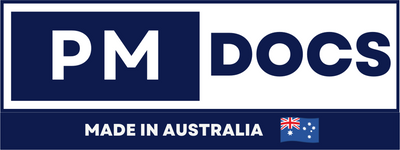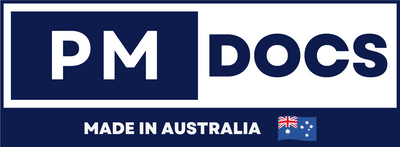Understanding Data Governance Frameworks In Australia
Introduction
Data governance refers to the processes, policies, standards, and metrics that ensure the effective and efficient use of information. It involves managing data availability, usability, integrity, and security. The goal is to ensure that data is consistent, trustworthy, and doesn't get misused. With the increasing reliance on data for strategic decision-making, data governance has become a vital component of organizational success. In Australia, data governance is particularly important due to strict regulatory requirements and the growing need for data-driven decision-making. Australian organizations must navigate laws such as the Privacy Act 1988, which impose rigorous standards for handling personal data. Additionally, a strong data governance framework can facilitate better data analytics, leading to more informed business strategies and enhanced operational efficiency.

Why Is Data Governance Important For Australian Companies?
Data governance is not just about compliance; it's about empowering businesses to harness data effectively. Here are some reasons why Australian companies should prioritize data governance:
1. Regulatory Compliance - Australia has stringent regulations like the Privacy Act 1988 and the Australian Prudential Regulation Authority (APRA) standards. These regulations necessitate robust data governance to protect personal information and maintain data integrity. Companies must implement rigorous data management practices to avoid hefty fines and reputational damage associated with non-compliance. By proactively addressing these regulatory requirements, businesses can foster trust with customers and stakeholders.
2. Enhancing Data Quality - Good data governance ensures that data is accurate, complete, and reliable, thus improving business intelligence and decision-making. High-quality data allows organizations to perform more precise analytics, leading to better business outcomes. Moreover, maintaining data quality helps streamline operations by reducing errors and inefficiencies. This, in turn, enhances customer satisfaction and drives business growth.
3. Risk Management - With a structured data governance framework, companies can mitigate risks associated with data breaches and non-compliance with legal standards. Effective risk management involves identifying potential data vulnerabilities and implementing measures to address them. By doing so, organizations can protect themselves from financial losses and damage to their reputation. Furthermore, a proactive approach to risk management can help companies respond more quickly to emerging threats.
4. Competitive Advantage - Companies with strong data governance can leverage data more effectively, giving them a competitive edge in the market. By utilizing data to gain insights into customer behavior and market trends, organizations can develop innovative products and services. This strategic use of data can also improve operational efficiencies, driving down costs and increasing profitability. Ultimately, a robust data governance framework enables companies to stay ahead of their competitors in an increasingly data-driven business environment.

Key Components Of A Data Governance Framework In
Creating an effective data governance framework involves several key components:
1. Data Governance Policies - Policies set the direction for data management practices. They define the 'what' and 'why' of data governance, ensuring alignment with business goals and regulatory requirements. Clear and concise policies provide a foundation for consistent data management across the organization. They also serve as a reference point for resolving data-related issues and disputes.
2. Data Stewardship - Data stewards are responsible for managing and overseeing data assets. They ensure data quality and compliance with policies. These individuals play a critical role in implementing data governance strategies and facilitating communication between different departments. By fostering a culture of accountability, data stewards help maintain high standards of data management throughout the organization.
3. Data Standards and Procedures - These are detailed guidelines on how data should be managed, including data entry, processing, and reporting standards. Standardized procedures ensure that data is handled consistently, reducing the likelihood of errors and inconsistencies. By adhering to these standards, organizations can improve data accuracy and facilitate seamless data integration across different systems. This, in turn, supports more effective data analysis and decision-making.
4. Data Quality Management - This involves processes and tools that ensure data accuracy and consistency across the organization. Effective data quality management requires ongoing monitoring and validation to identify and correct data issues. By leveraging advanced data management tools, organizations can automate quality checks and streamline data cleansing processes. This proactive approach to data quality management enhances the reliability of data-driven insights and decisions.
5. Data Security and Privacy - Protecting sensitive information is crucial. This includes implementing security measures and ensuring compliance with privacy laws. Data security involves safeguarding data against unauthorized access, breaches, and other threats. Privacy measures ensure that personal information is handled in accordance with legal and ethical standards. By prioritizing data security and privacy, organizations can protect their assets and maintain customer trust.
6. Data Lifecycle Management - Managing data from creation to deletion ensures that data remains accurate and relevant over time. This involves establishing policies for data retention, archiving, and disposal. By systematically managing the data lifecycle, organizations can optimize storage resources and reduce the risk of data sprawl. Additionally, effective data lifecycle management helps ensure compliance with regulatory requirements for data retention and disposal.
Implementing A Data Governance Framework
1. Assess Current Data Management Practices - Begin by evaluating your current data management processes to identify gaps and areas for improvement. This assessment should involve a comprehensive review of existing data governance policies, procedures, and tools. By understanding the current state of data management, organizations can develop targeted strategies to address weaknesses and capitalize on strengths.
2. Define Data Governance Objectives - Align data governance initiatives with business objectives and regulatory requirements. Clearly defined objectives provide a roadmap for implementing a successful data governance framework. These objectives should reflect the organization's strategic priorities and address specific regulatory and compliance needs. By aligning data governance with broader business goals, companies can ensure that their efforts support overall organizational success.
3. Develop a Governance Structure - Create a governance structure that includes roles and responsibilities for data management within the organization. This structure should outline the hierarchy of data governance roles, from senior leadership to data stewards. By establishing clear lines of responsibility, organizations can ensure that data governance initiatives are effectively coordinated and executed. Additionally, a well-defined governance structure facilitates communication and collaboration across departments.
4. Establish Policies and Standards - Develop clear policies and standards that guide data management practices. These policies should address key areas such as data quality, security, and privacy. By providing clear guidelines, organizations can ensure that data is managed consistently and in compliance with regulatory requirements. Additionally, well-defined policies and standards help employees understand their roles and responsibilities in maintaining data quality and security.
5. Invest in Technology - Use data management tools that support data governance efforts, such as data cataloging and metadata management tools. These technologies can automate data management processes, improving efficiency and accuracy. By investing in advanced data management tools, organizations can enhance their ability to monitor and control data across the enterprise. Additionally, technology can support real-time data analysis, providing valuable insights for decision-making.
6. Train Employees - Ensure that all employees understand the importance of data governance and their role in maintaining data quality. Training programs should cover key concepts such as data stewardship, security, and privacy. By fostering a culture of data literacy, organizations can empower employees to contribute to data governance efforts. Ongoing training and development can also help employees stay informed about new data governance practices and technologies.
Governance Best Practices For Australian Companies
1. Foster a Data-Driven Culture - Encourage a culture where data-driven decision-making is the norm. This involves making data accessible to employees and encouraging its use in strategic planning. By promoting data literacy and providing the necessary tools and resources, organizations can empower employees to leverage data effectively. A data-driven culture supports innovation and agility, enabling companies to respond quickly to changing market conditions.
2. Regularly Review and Update Policies - Data governance is not a one-time effort. Regularly review and update your policies to ensure they remain relevant and effective. This involves monitoring changes in regulatory requirements and industry best practices. By continuously refining data governance policies, organizations can adapt to new challenges and opportunities. Regular reviews also help identify areas for improvement and ensure that data governance efforts align with organizational goals.
3. Engage Stakeholders - Involve stakeholders from various departments in the data governance process to ensure comprehensive and inclusive policy-making. This collaborative approach ensures that data governance strategies address the needs and concerns of all relevant parties. By engaging stakeholders, organizations can build consensus and support for data governance initiatives. Additionally, stakeholder involvement fosters a sense of ownership and accountability, driving successful implementation.
4. Monitor Compliance - Implement monitoring systems to ensure compliance with data governance policies and regulations. These systems should provide real-time insights into data management practices and identify potential compliance issues. By actively monitoring compliance, organizations can address problems before they escalate and avoid regulatory penalties. Additionally, regular audits and assessments can help ensure that data governance efforts remain on track.
5. Adapt to Technological Changes - Stay informed about technological advancements and adapt your data governance framework accordingly to leverage new opportunities. Emerging technologies such as artificial intelligence, machine learning, and blockchain offer new possibilities for data management. By embracing these innovations, organizations can enhance their data governance capabilities and improve operational efficiency. Staying abreast of technological trends also positions companies to capitalize on new data-driven business models.
Conclusion
A robust data governance framework is essential for Australian companies to ensure data quality, compliance, and security. By understanding the key components and best practices of data governance, businesses can effectively manage their data assets and gain a competitive advantage. Implementing a data governance framework requires commitment and resources, but the benefits far outweigh the challenges, leading to improved data management and business success. With a strategic approach to data governance, Australian companies can navigate the complexities of the digital age and thrive in an increasingly data-driven world.



